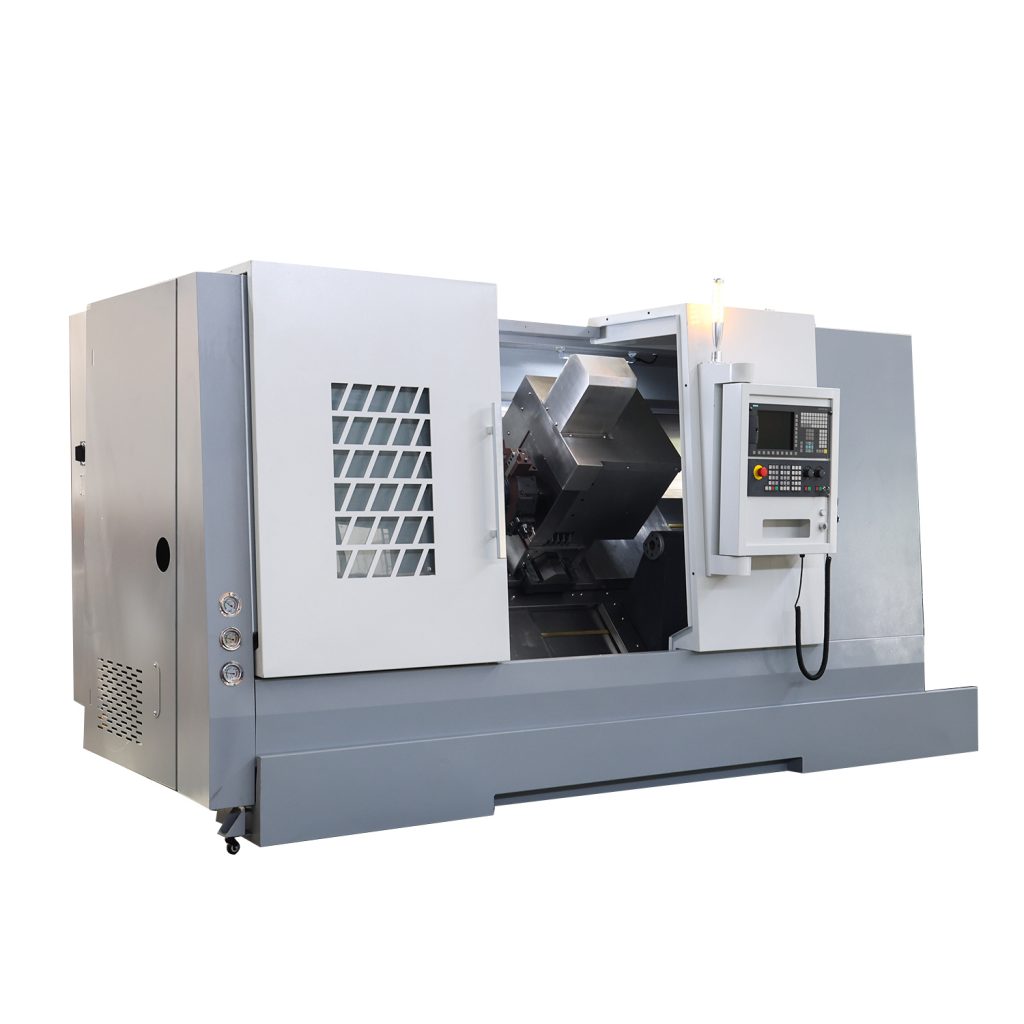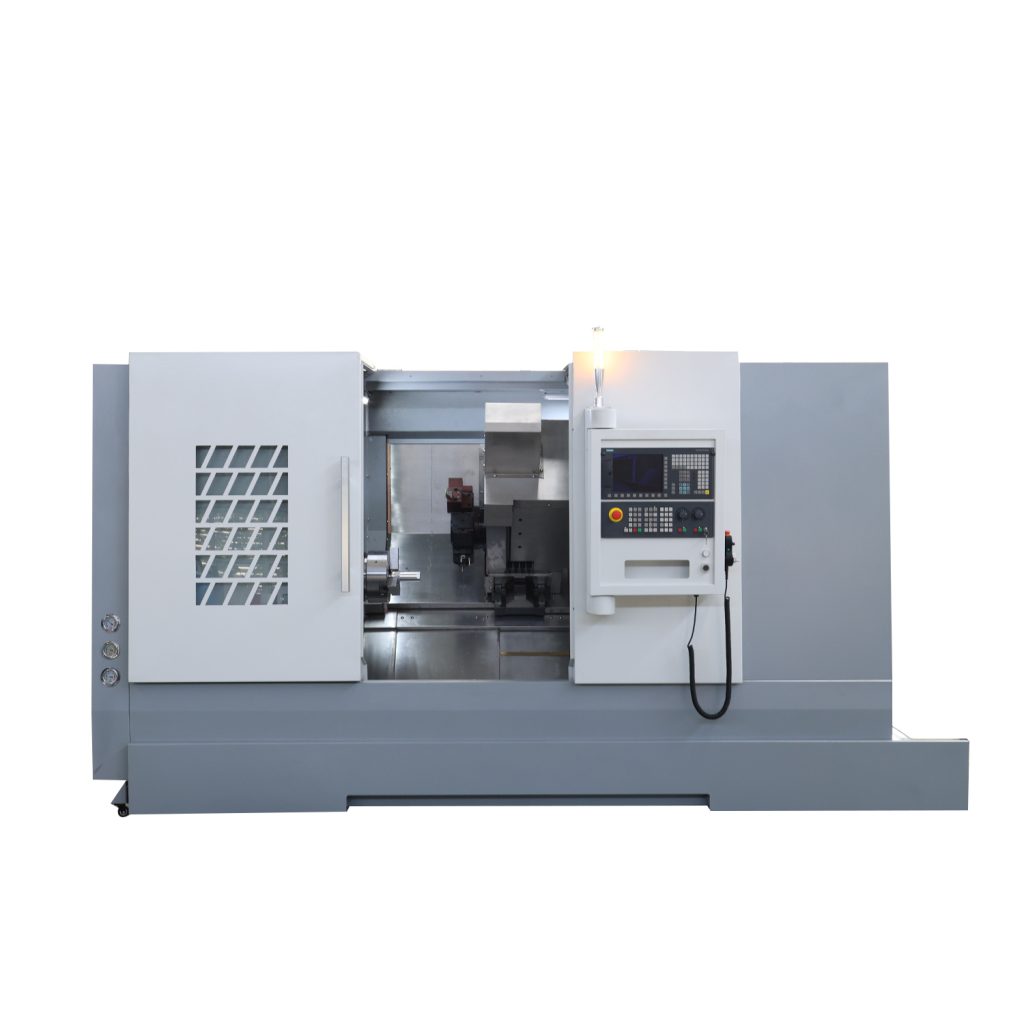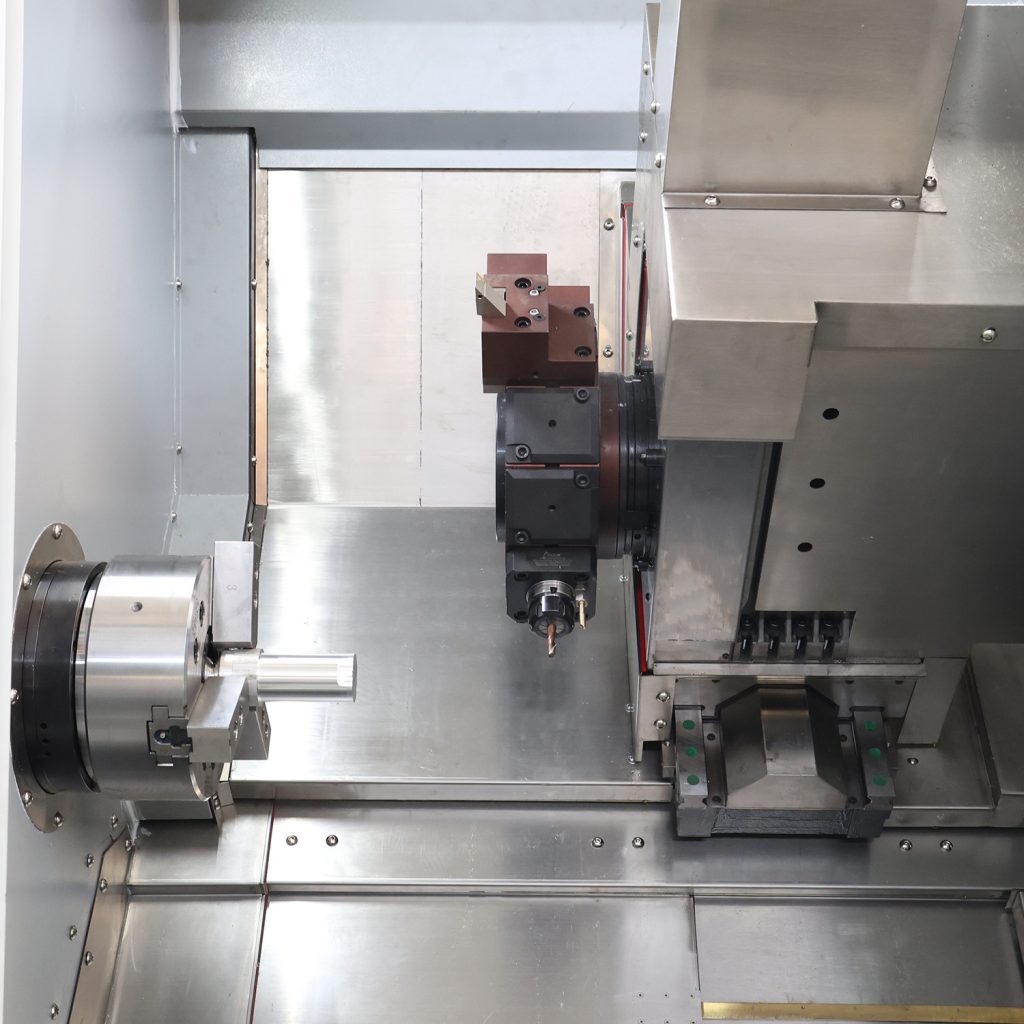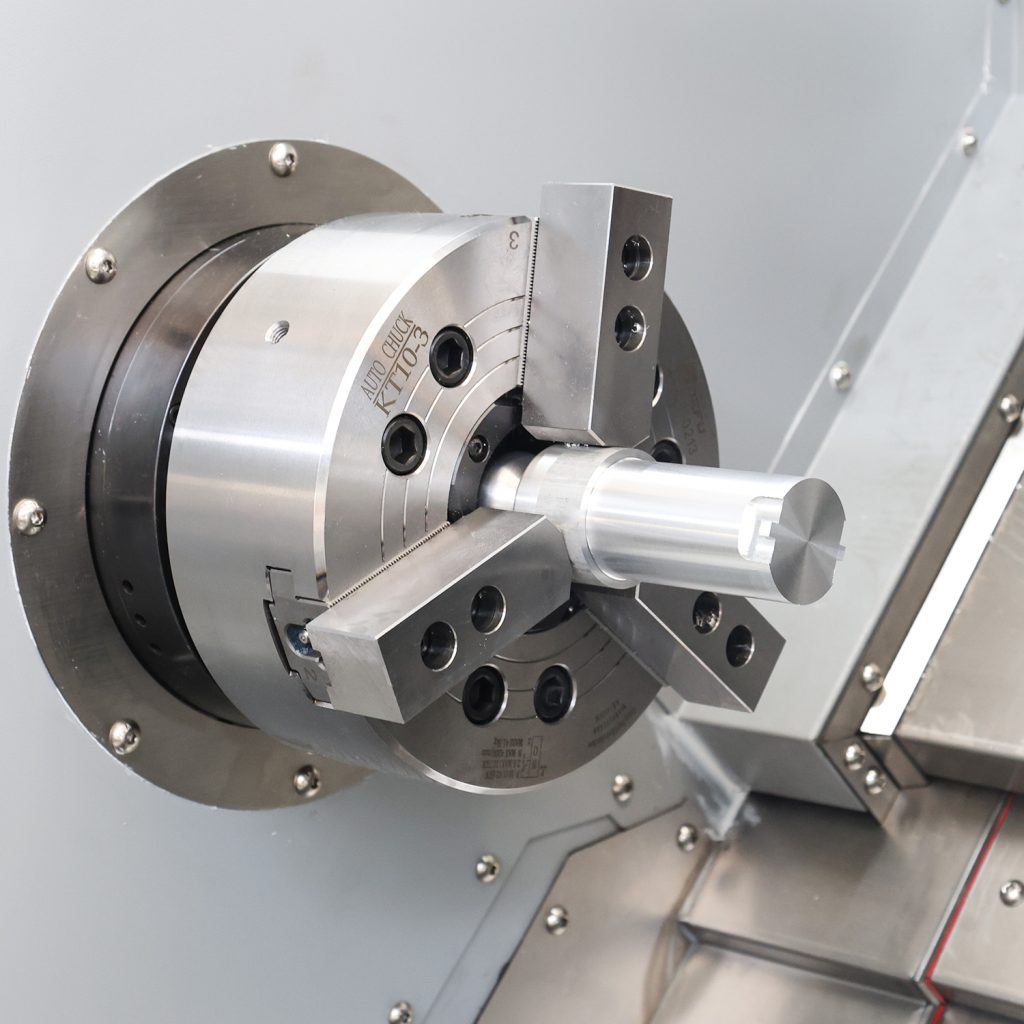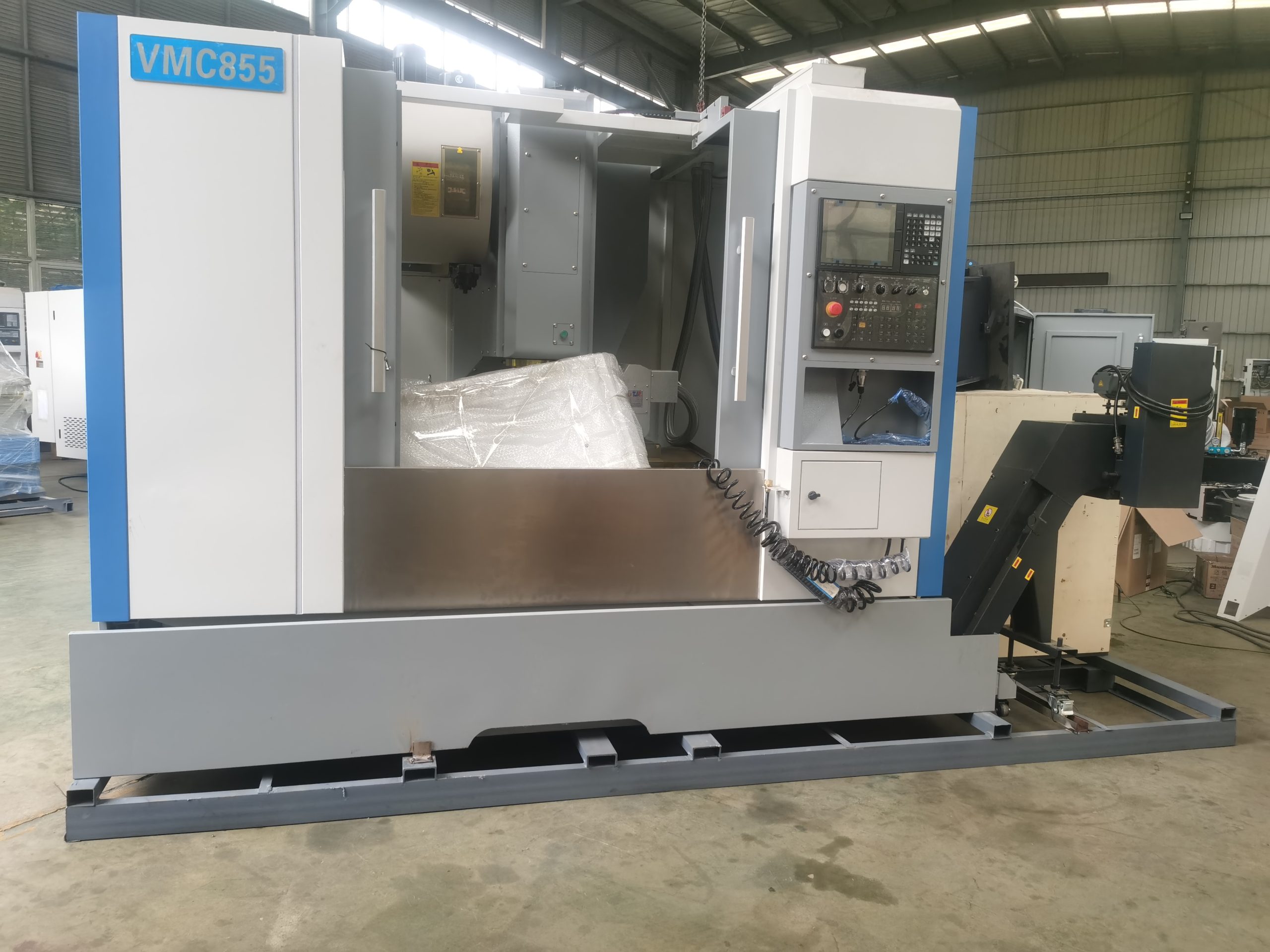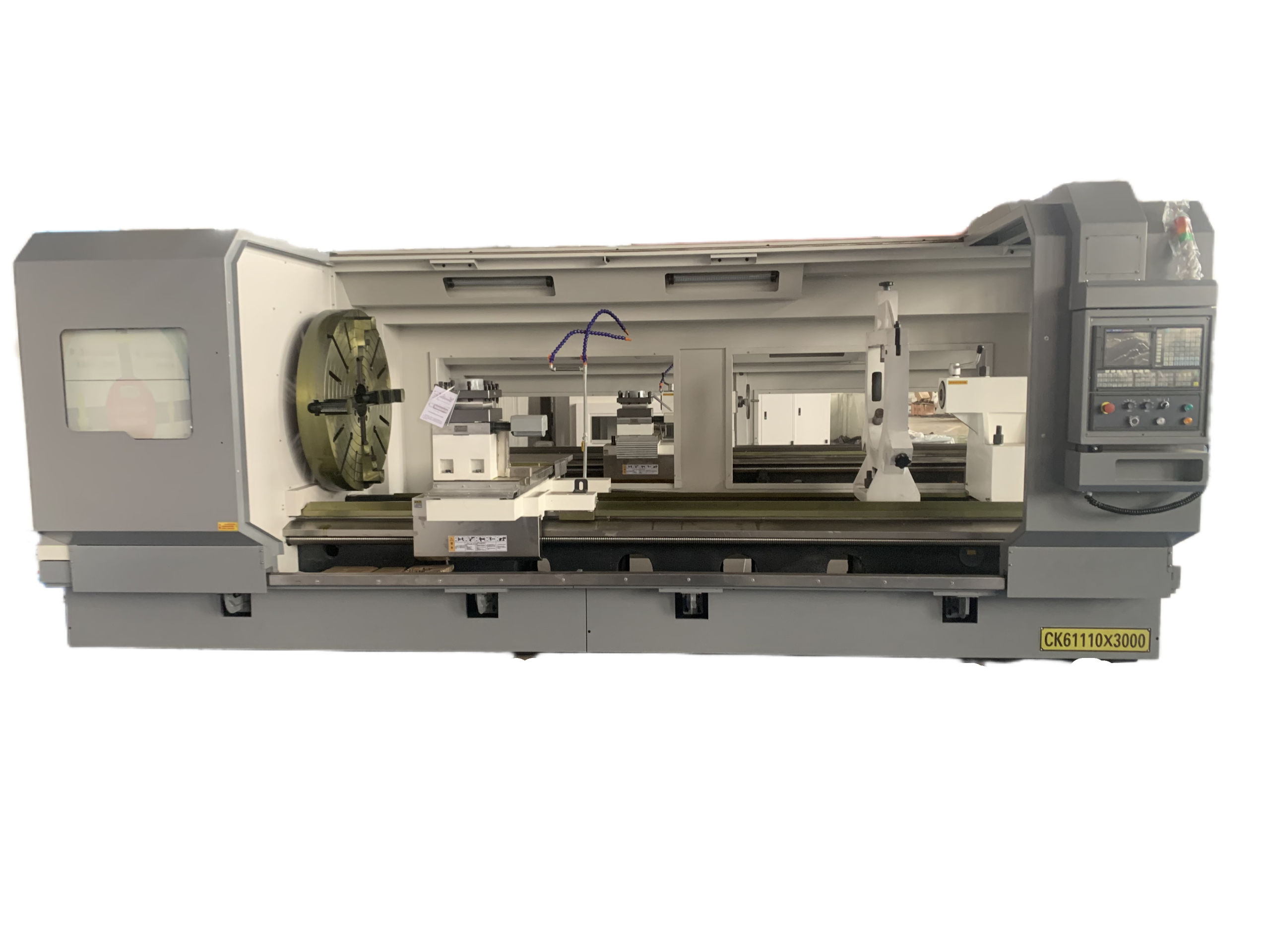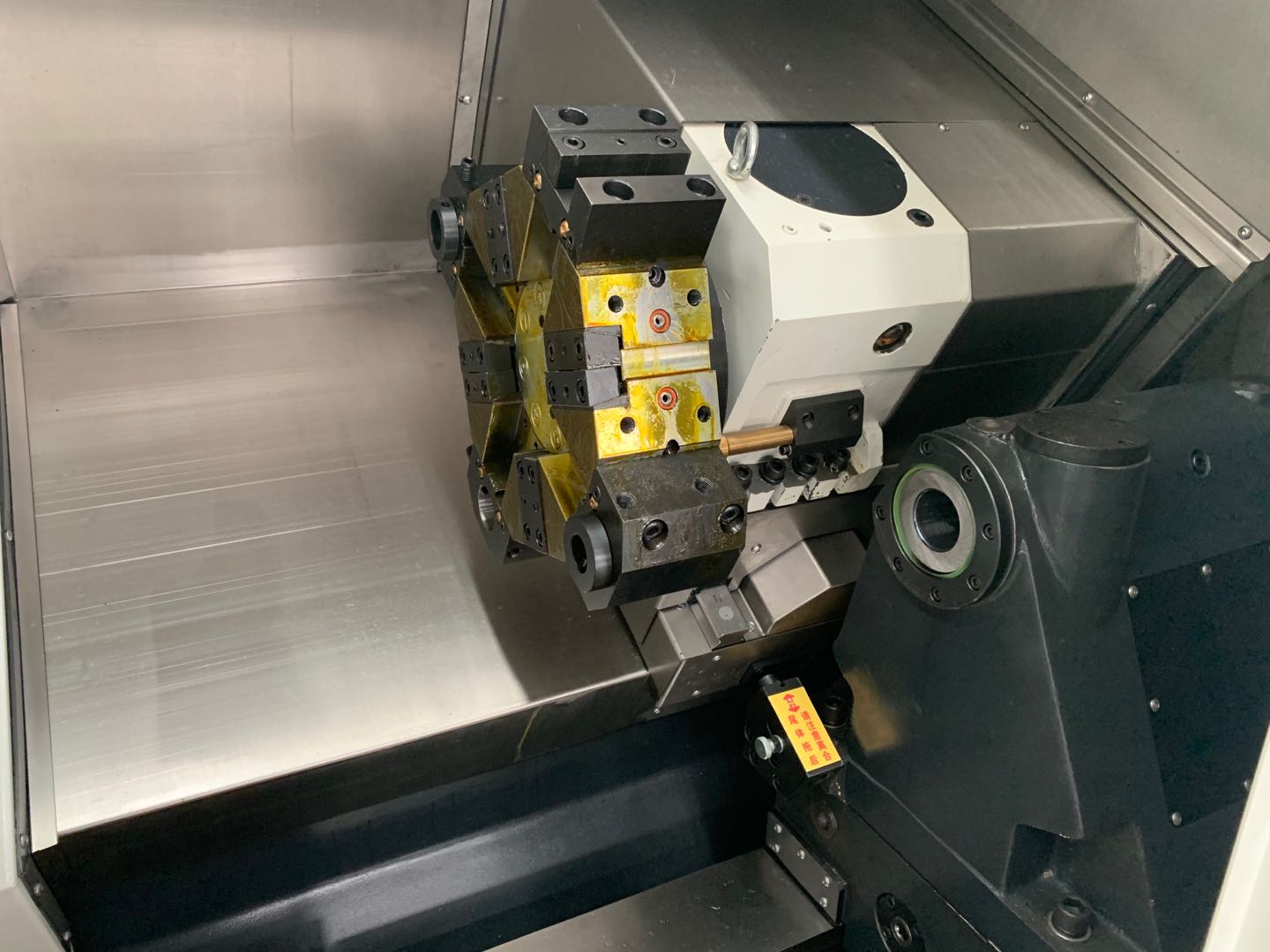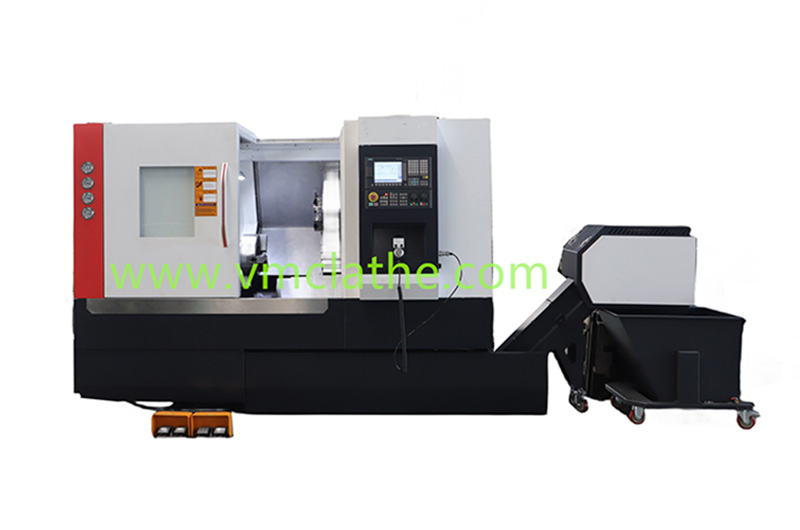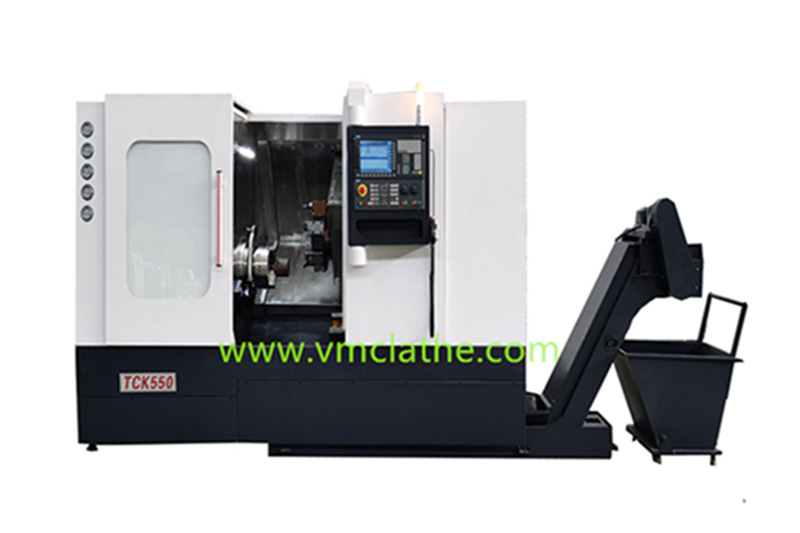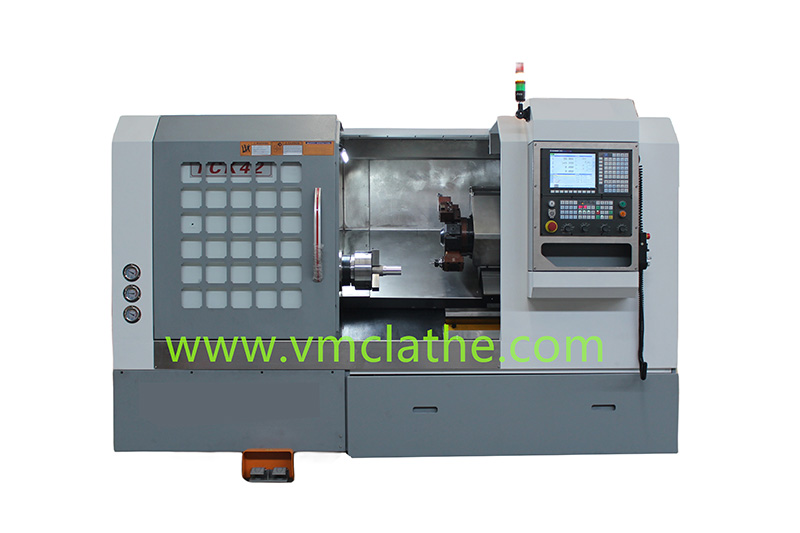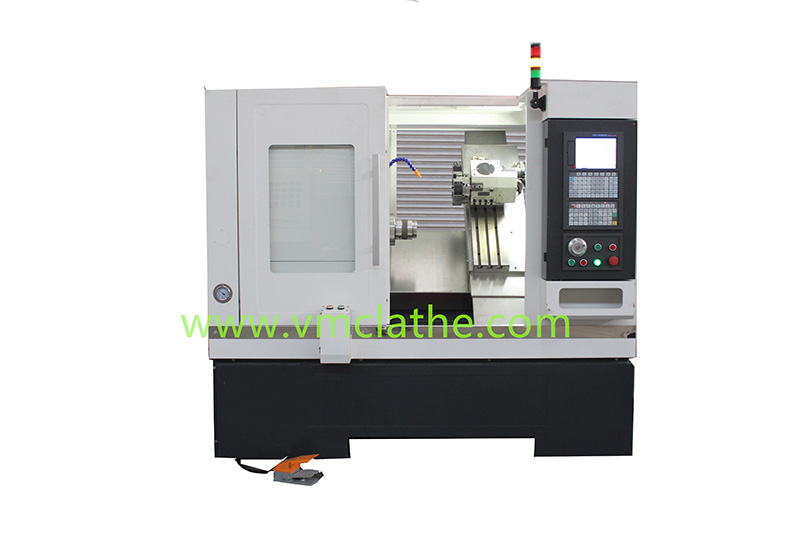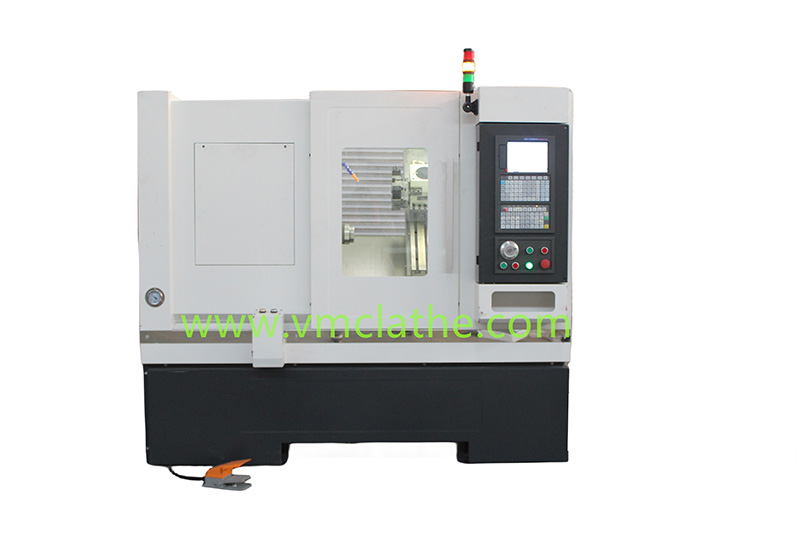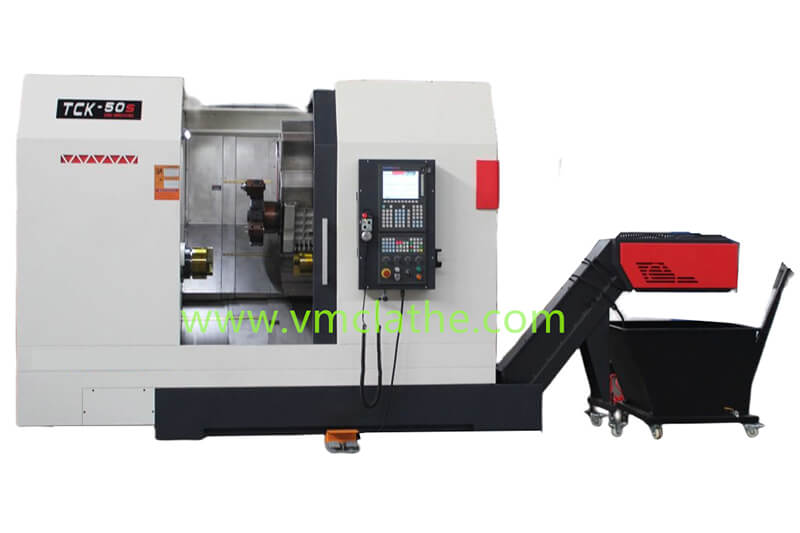The Y-axis of a slant-bed CNC lathe expands the tool’s motion dimensions, enabling a variety of key cutting functions and significantly improving machining capacity and efficiency. Its core cutting functions include:
1. Three-dimensional cutting capabilities
A. Multi-angle bevel machining: The Y-axis enables tool movement in the fore-aft direction (perpendicular to the XZ plane), supporting tasks such as inverted beveling and side grooving. For example, when machining variable-pitch screws for aircraft engine blades, the Y-axis can perform “twisting” engraving to ensure pitch accuracy.
B. Complex curved surface machining: With synchronized X/Y/Z motion, the turning tool can follow a precise cutting path when machining three-dimensional curved surfaces such as turbine blades and spiral structures, reducing clamping times and improving surface quality.
2. High-Precision Deep Hole and Microstructure Machining
A. Deep Hole Machining Optimization: When machining deep holes such as those in hydraulic valve body oil passages, the Y-axis controls the tool tilt angle, reducing the impact of cutting forces on the hole wall, keeping the inner wall tolerance within ±0.005mm and significantly improving surface finish.
B. Microstructure Machining: For micro-components such as connectors and plug-ins in the electronics and communications industry, the Y-axis achieves micron-level precision machining to meet the demands of high-density integration.
3. Cutting Difficult-to-Machine Materials
A. Layered Slow-Entry Technology: The Y-axis utilizes a layered cutting strategy to release tension layer by layer, reducing residual stress during cutting. For example, the yield rate for titanium-tungsten alloy materials has increased from 58% to 91.5%.
B. High-Temperature Alloy Machining: In the aerospace industry, the Y-axis supports the machining of high-temperature alloy parts such as engine blades and turbine disks, ensuring high-precision forming of complex aerodynamic surfaces.
4. Multi-Process Composite Cutting Functionality
A. Turning and Milling: The Y-axis is integrated with the powered turret and milling head to enable multiple processes, including turning, milling, and drilling, to be completed on a single machine. For example, when machining automotive timing pulleys, the turning tool can simultaneously perform axial grooving and side hole milling, reducing overall work time by 42%.
B. Drilling and Tapping: The Y-axis, in conjunction with spindle orientation, enables continuous hole machining and thread tapping, eliminating secondary clamping and positioning errors.
5. Special Structure Cutting Functionality
A. Trapezoidal Taper Hole Machining: The Y-axis controls the tool angle to achieve single-clamping trapezoidal taper holes, eliminating manual adjustment errors.
B. Spiral Groove Machining: The Y-axis is linked to the C-axis (spindle indexing) to produce high-precision spiral grooves, meeting the requirements of components such as hydraulic pumps and compressors.
C. Asymmetric Structure Machining: For example, in medical implant machining, the Y-axis enables precise cutting of asymmetric surfaces, ensuring biocompatibility and functional stability.
6. Cutting Parameter Optimization
A. Reduced Idle Stroke: The Y-axis calculates the shortest cutting path, reducing non-cutting time and improving machining efficiency.
B. Constant Cutting Speed Control: Combined with Y-axis movement, this maintains a constant speed at the contact point between the tool and the workpiece, avoiding cutting force fluctuations caused by workpiece shape changes and extending tool life.
C. High-Feed Rate Machining: During roughing, the Y-axis utilizes a large depth of cut and high feed strategy to rapidly remove stock and improve material removal rates.

